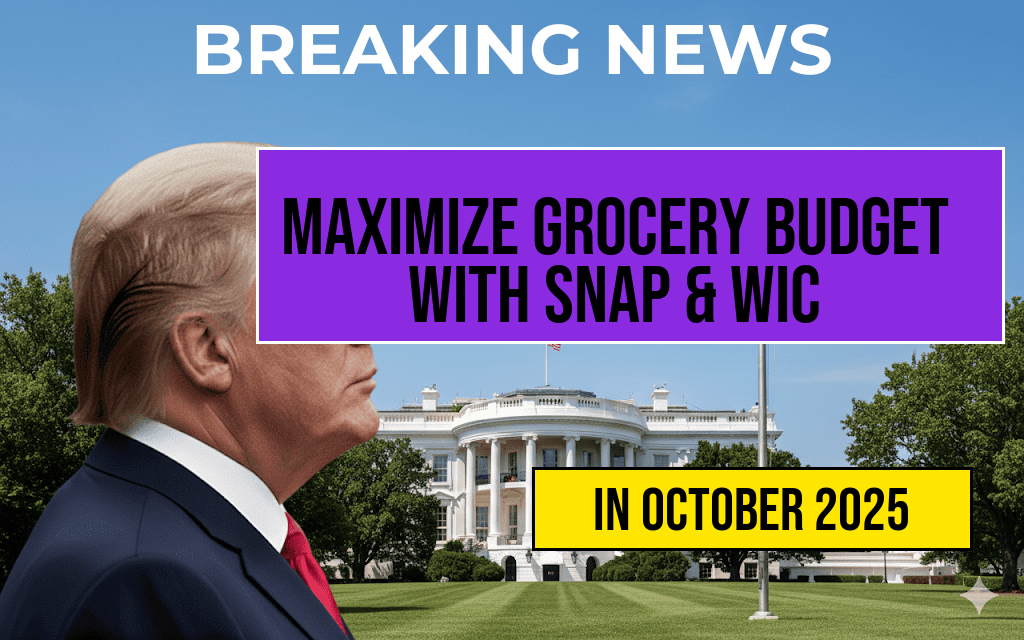The recent federal government shutdown has created uncertainty for millions of Americans relying on nutrition assistance programs such as the Supplemental Nutrition Assistance Program (SNAP) and the Special Supplemental Nutrition Program for Women, Infants, and Children (WIC). While benefits for some recipients may continue uninterrupted temporarily, others face delays or reductions, prompting many families to seek ways to stretch their food budgets. Combining SNAP and WIC benefits effectively can help households maintain access to nutritious foods during periods of funding uncertainty. This article explores practical strategies for maximizing these benefits, clarifies eligibility considerations during a shutdown, and provides resources to support families navigating this challenging landscape.
Understanding SNAP and WIC During a Shutdown
How Benefits Are Affected
The impact of a government shutdown on SNAP and WIC depends on the duration and scope of the funding lapse. Typically, SNAP benefits are issued monthly through electronic benefit transfer (EBT) cards, with some states able to continue issuing benefits for a limited period using existing federal funds. However, if the shutdown extends beyond available reserves, new benefit issuance may halt, leaving recipients without immediate access to funds. Conversely, WIC benefits are administered at the state level, often through local clinics, and may experience disruptions if staffing or federal funding is delayed.
The U.S. Department of Agriculture (USDA) oversees SNAP, and the WIC program is managed by the Food and Nutrition Service. During shutdowns, agencies prioritize existing benefits but cannot approve new applications or issue additional funds once federal allocations are exhausted. States may issue emergency allotments or temporary extensions; however, these are not guaranteed and vary widely.
Strategies to Maximize Your Benefits
Prioritize Nutritious, Cost-Effective Foods
- Focus on whole grains, beans, and seasonal produce: These items are nutrient-dense and typically less expensive, providing essential vitamins and fiber.
- Plan meals around sales and discounts: Check local store flyers and digital coupons to stretch your dollar further.
- Buy in bulk when possible: Items like rice, oats, and canned goods can be stored and used over time.
Combine SNAP and WIC Benefits Effectively
| Benefit Type | Eligible Items | Benefit Delivery | Limitations |
|---|---|---|---|
| SNAP | Most food items, excluding alcohol, hot foods, and supplements | Monthly EBT card load | Income-based, no age restrictions |
| WIC | Specific nutritious foods like milk, eggs, cereal, and baby foods | Periodic vouchers or eWIC cards | Eligibility based on pregnant women, new mothers, infants, and young children |
Recipients can use SNAP to buy a broad range of foods, while WIC provides targeted items that complement a balanced diet. Combining both allows families to access a wider variety of nutritious foods, especially during periods of financial strain.
Timing Purchases and Utilizing Benefits
- Coordinate benefits: Use WIC vouchers for perishable items early in the month and reserve SNAP funds for staples and bulk purchases.
- Track benefit expiration dates: Ensure timely redemption of WIC vouchers and monitor SNAP balance via your state’s EBT portal.
- Shop at stores participating in EBT and WIC programs: Confirm that your local grocers accept both benefits to avoid inconvenience.
Additional Resources and Support
Accessing Emergency Assistance
During a shutdown, local agencies and community organizations often step in to provide emergency food assistance. Contact your state or local health department to learn about temporary programs or food bank partnerships. The Feeding America network offers extensive food bank resources across the country.
Staying Informed
- Monitor updates from the USDA Food and Nutrition Service for official guidance on benefit status during shutdowns.
- Register for alerts from your state’s SNAP office to receive timely notices about benefit issuance or delays.
- Consult reputable sources such as The Washington Post or Forbes for comprehensive coverage and updates.
While a government shutdown can create significant hurdles, understanding how to effectively combine and utilize SNAP and WIC benefits offers a tangible way for families to maintain access to nutritious foods. Staying informed and planning purchases carefully can mitigate some of the disruptions, ensuring that vulnerable populations continue to meet their dietary needs despite federal funding uncertainties.
Frequently Asked Questions
What are SNAP and WIC benefits?
SNAP (Supplemental Nutrition Assistance Program) provides financial assistance to purchase food, while WIC (Women, Infants, and Children) offers nutrition support and resources specifically for pregnant women, new mothers, and young children.
How can I maximize my SNAP and WIC benefits during a government shutdown?
To maximize your benefits, plan your shopping around the most nutritious and cost-effective options, use your WIC vouchers for specific nutritious items, and take advantage of any emergency allotments or extensions provided by local agencies during the shutdown.
Are SNAP and WIC benefits affected during a government shutdown?
Typically, SNAP benefits are protected and continue during a shutdown, but WIC services may be limited or delayed depending on federal funding status. It’s important to stay informed through local agencies for updates.
Can I combine SNAP and WIC benefits for shopping?
Yes, you can use SNAP benefits to purchase eligible food items and WIC vouchers for specific nutritional products during your shopping trip, helping you stretch your grocery budget further.
What resources are available if my SNAP or WIC benefits run out during a shutdown?
Many local agencies offer emergency assistance, food banks, and community programs to help supplement your SNAP and WIC benefits. Contact your local social services or food assistance organizations for support and resources available in your area.

Leave a Reply